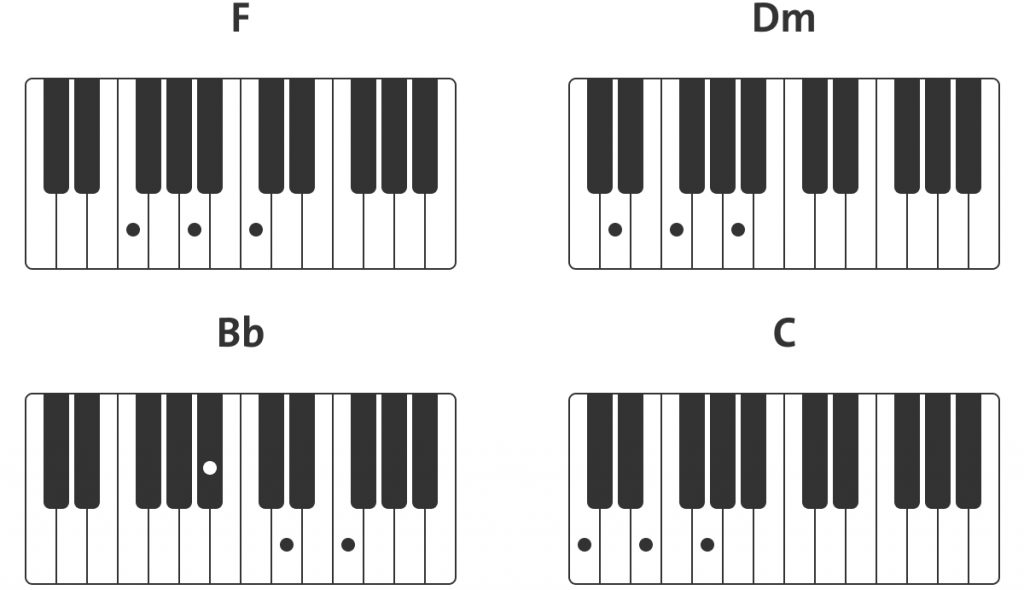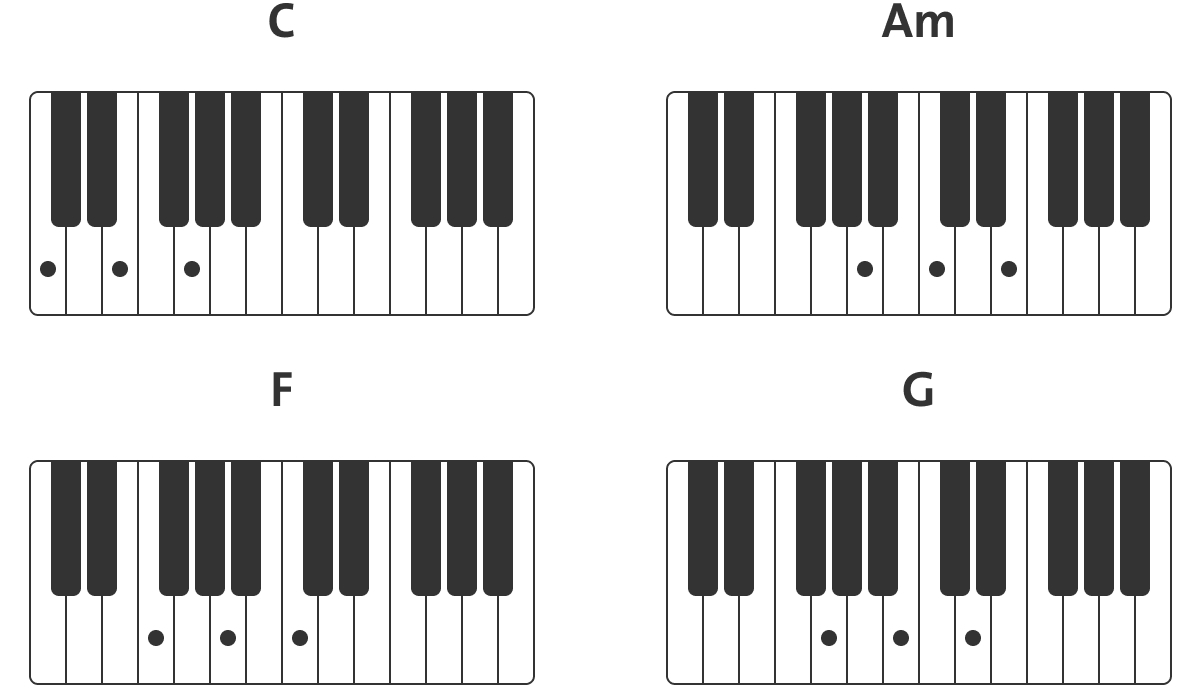Welcome to a new edition of the “Chord progression of the month” series. The magic is that many famous songs might be based on the same well known chord progression – a sequence of chords within a certain key. And there are several chord progressions which are determined as the most used in songs nowadays. So, by learning one of these chord progressions, you can apply it to several songs. Sounds interesting, right?
In this article, we’ll talk about the “I – vi – IV – V” chord progression. And if you somehow missed our previous edition (I – V – vi – IV), check it out!
Estimated reading time: 7 minutes
In this chord progression of the month blog you’ll find:
The I – vi – IV – V chord progression
Let’s start talking about one of the famous chord progressions in a major key:
We indicate this chord progression by Roman numerals, meaning that it can be played in different major keys. Roman numerals indicate the notes or chords within a certain key. In the case of chords, the roman numeral indicates what note this chord is based on. It’s important to mention that the roman numeral becomes a capital letter for a major chord and a lowercase letter for a minor chord. You can see that in this chord progression – the I, IV and V chords are major and the vi chord is minor. Read more about chord progressions in our Music Dictionary.
The Function of the chords
This chord progression contains basic but very important chords which you can find in many songs. It definitely deserves attention to talk about these chords in a bit more detail.
The I chord is called the tonic chord, perceived by us as the center of harmony or as the most stable chord.
The vi chord is a minor chord. Furthermore, it is a tonic chord of the relative minor key. Ah… what?! Simply put, a pair of major and minor keys which have the same key signatures (sharps and flats) and therefore, the same notes, are relative keys. So, this vi chord can replace the I chord, adding some melancholic flavors.
The IV chord is called the subdominant chord and the V chord is called the dominant chord – these are very important diatonic major chords, creating tensions and movements, preparing for the tonic chord. After the V chord in particular, we are more likely to expect the I chord. The I, IV and V chords are also the basis for rock-n-roll and blues.
But enough theory for now. It’s time for practicing! Grab your instrument and read further.
I – vi – IV – V in the key of C major
Let’s assume that we want to play this chord progression in the key of C major. First, we need to find all the root notes for the chords in this key.
The “I” chord is created from the 1st note of the C major scale, which is obviously the C note. The “vi” chord is created from the 6th note of the C major scale, which is the A note.
The “IV” chord is based on the F note.
The “V” chord is based on the G note.
We’ve just found all the root notes. The second step will be to build up a chord from each of these notes.
In this example we’ll create triads. Read more about major / minor triads here. For instance, from the “I” (the C) note, the chord will consist of C, E and G notes. From the “vi” (the A) note, the chord will consist of A, C and E notes, the same way we can create triads from the IV (the F) and the V (the G) notes. See the figure below.
Let’s write down this chord progression in the key of C major in chord symbols:
Chord diagrams in C major
Do you already know how to play these chords on your instrument? Just in case, we prepared the chord diagrams for you.
For guitar:
For piano:
For ukulele:
I – vi – IV – V in the key of F major
Of course, it’s important to play this chord progression in different keys. Let’s practice playing it in the F major key. We’ll follow the same steps we took for the C major key.
Let’s find all the root notes in this key.
Now let’s build up a chord from each of these notes. Again we’ll use triads for that.
In the chord symbols this chord progression will look like this:
Chord diagrams in F major
And here are the chord diagrams for all three instruments.
For guitar:
For piano:

Piano chord diagrams
For ukulele:

Ukulele chord diagrams
List of songs
After you’ve learned the theory, what can be more inspiring than applying your new knowledge and playing some songs with this chord progression!?
We prepared channel filled with songs based on the I – vi – IV – V chord progression. Most of these songs are in different keys, which is good for practicing!
Final thoughts
Well, you can add another famous chord progression to your collection: I – vi – IV – V! And we’ve learned how to find these four chords in different keys. Now it’s the time for playing more music and having fun with your instrument!
Happy jamming!













